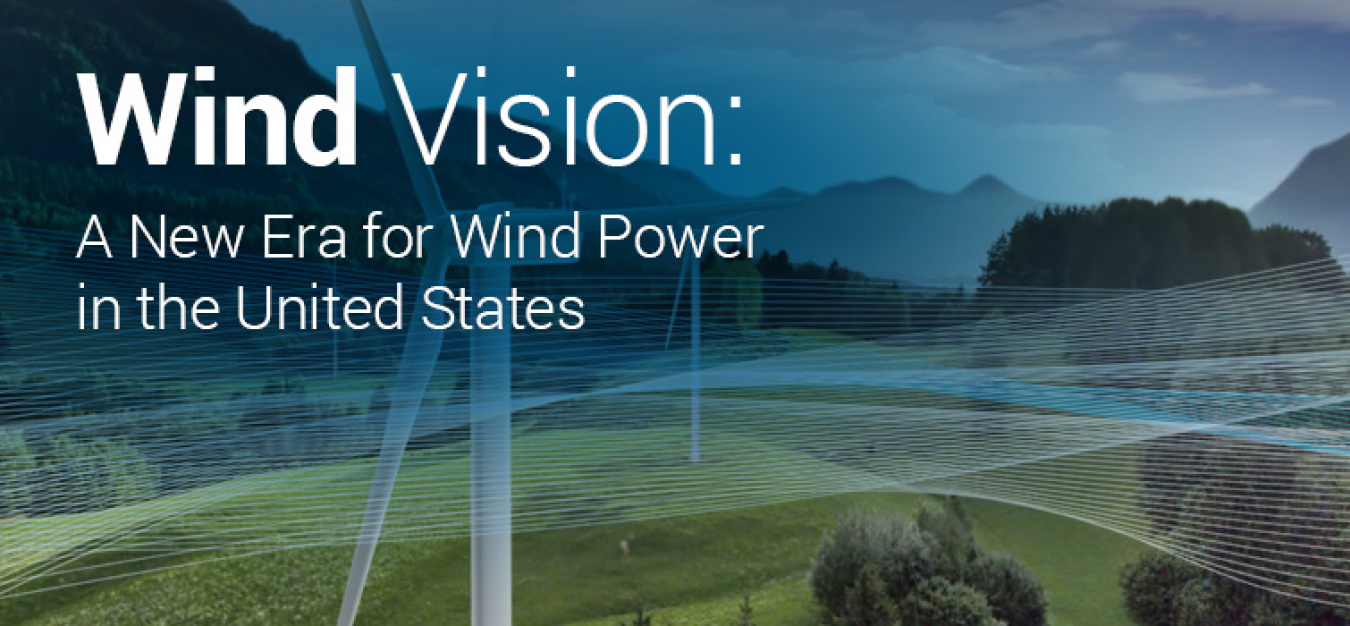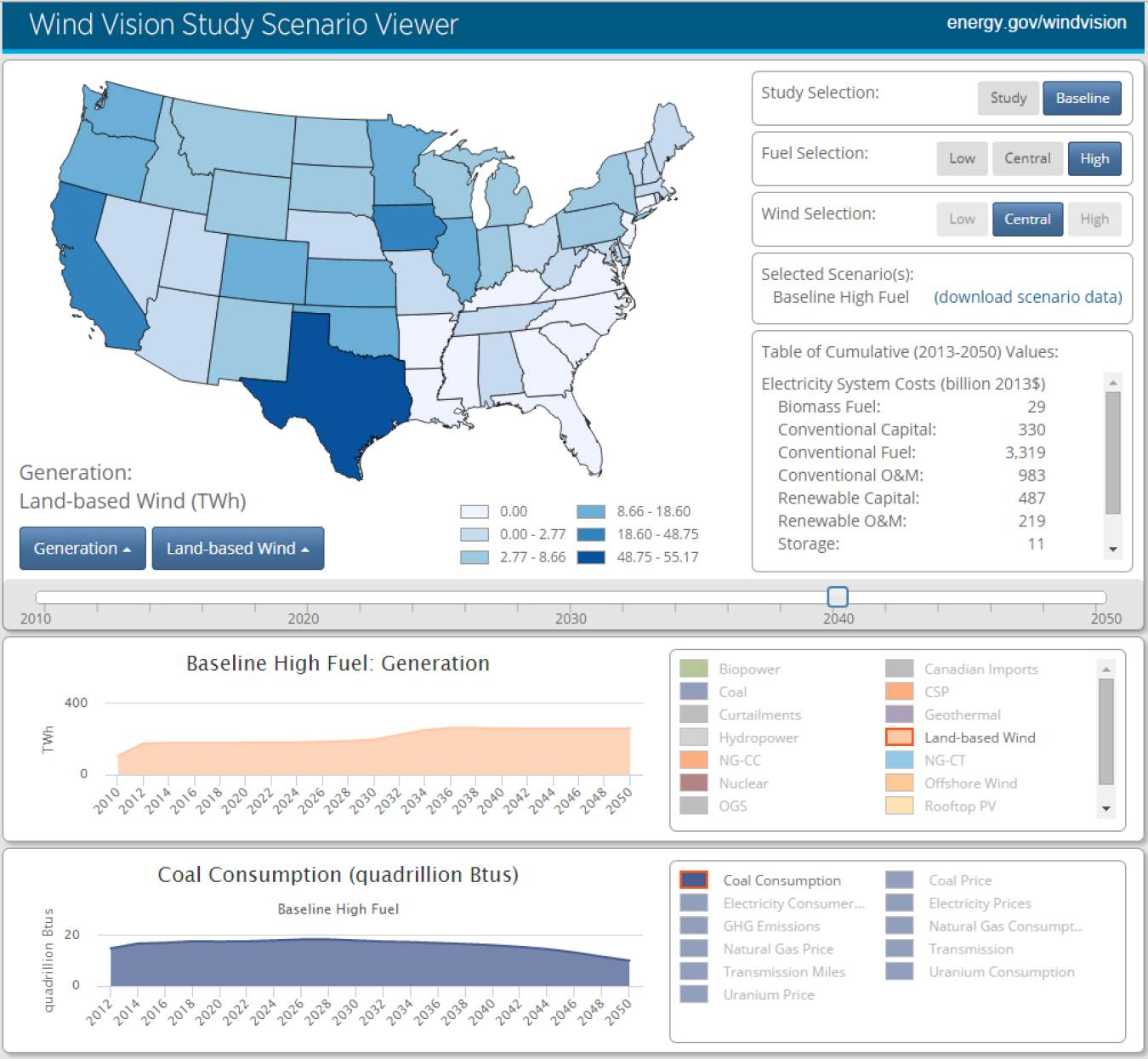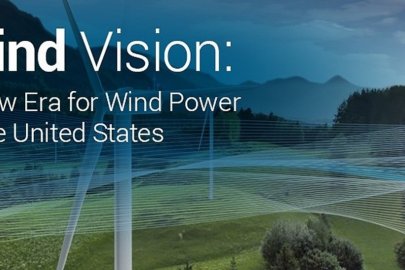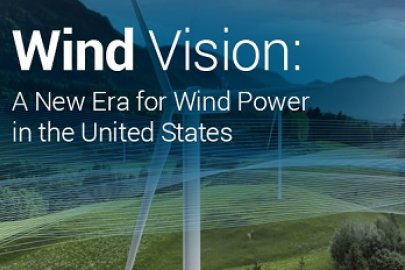
About
The U.S. Department of Energy's (DOE's) Wind Energy Technologies Office convened an elite team of researchers, academics, scientists, engineers, and wind industry experts revisited the findings of the Energy Department’s 2008 20% Wind by 2030 report and built upon its findings to conceptualize a new vision for wind energy through 2050.
The Wind Vision report ends with a roadmap of technical, economic, and institutional activities to optimize wind’s potential contribution to a cleaner, more reliable, domestic energy generation portfolio, detailed in Chapter 4 (The Wind Vision Roadmap: A Pathway Forward) and Appendix M (Detailed Roadmap Actions). Consistent with DOE’s stated intention of updating the roadmap periodically, the National Renewable Energy Laboratory contracted Renewable Energy Consulting Services, Inc. to elicit feedback through a series of topical working sessions in 2016–2017, culminating in the Wind Vision Detailed Roadmap Actions: 2017 Update.
Wind Vision Data Viewer

See the data from the Wind Vision Report in various scenarios with the OpenEI Study Scenario Viewer.
Objectives
The Wind Energy Technologies Office led a comprehensive analysis to evaluate future pathways for the wind industry. Through a broad-based collaborative effort, the Wind Vision had four principal objectives:
- Document the current state of wind power in the United States and identify key technological accomplishments and societal benefits leading up to 2013;
- Explore the potential pathways for wind power to contribute to the future electricity needs of the nation, including objectives such as, improved air quality, and reduced water use.
- Quantify costs, benefits, and other impacts associated with continued deployment and growth of U.S. wind power; and
- Identify actions and future achievements that could support continued growth in the use of wind energy.
Key Findings of the Wind Vision Report
- Wind energy is available nationwide. The Wind Vision Report shows that wind can be a viable source of renewable electricity in all 50 states by 2050.
- Wind energy supports a strong domestic supply chain. Wind has the potential to support over 600,000 jobs in manufacturing, installation, maintenance, and supporting services by 2050.
- Wind energy is affordable. As wind generation agreements typically provide 20-year fixed pricing, the electric utility sector is anticipated to be less sensitive to volatility in natural gas and coal fuel prices with more wind. By reducing national vulnerability to price spikes and supply disruptions with long-term pricing, wind is anticipated to save consumers $280 billion by 2050.
- Wind energy reduces air pollution emissions. Operating wind energy capacity avoided the emission of over 250,000 metric tons of air pollutants, which include sulfur dioxide, nitric oxide, nitrogen dioxide, and particulate matter, in 2013. By 2050, wind energy could avoid the emission of 12.3 gigatonnes of greenhouse gases.
- Wind energy preserves water resources. By 2050, wind energy can save 260 billion gallons of water—the equivalent to roughly 400,000 Olympic-size swimming pools—that would have been used by the electric power sector.
- Wind energy deployment increases community revenues. Local communities will be able to collect additional tax revenue from land lease payments and property taxes, reaching $3.2 billion annually by 2050.
To read more about the findings of the Wind Vision Report, download the full report. Learn more about wind energy milestones made in the two years after the publication of the Wind Vision Report.
The Wind Vision report ends with a roadmap of technical, economic, and institutional activities to optimize wind’s potential contribution to a cleaner, more reliable, domestic energy generation portfolio, detailed in Chapter 4 (The Wind Vision Roadmap: A Pathway Forward) and Appendix M (Detailed Roadmap Actions).
Still Want to Learn More?
Return to the Wind Office's home page, browse through the office's funded activities, or read about Wind Office accomplishments over the past 30 years. Get Wind Energy Technology Office information as it happens by subscribing to our breaking news email.
Wind Vision News
-
 The Department of Energy’s Wind Vision report assesses the potential economic and social benefits of a study scenario where U.S. wind power supplies 10% of the nation’s electrical demand by 2020, 20% by 2030, and 35% by 2050. It also outlines a roa...
The Department of Energy’s Wind Vision report assesses the potential economic and social benefits of a study scenario where U.S. wind power supplies 10% of the nation’s electrical demand by 2020, 20% by 2030, and 35% by 2050. It also outlines a roa... -
Wind power is a growing source of low-cost, renewable energy in the U.S. A new report shows how next-generation wind turbine technology can unlock ...
-
Wind Vision: A New Era for Wind Power in the United States confirms that with technological advancements driving projected cost reductions, in combination with continued siting and transmission development, wind power can be economically deployed to pr...
Wind Vision Videos
-
Wind Vision presentation given at the American Wind Energy Association's WINDPOWER Conference.
-
 The Wind Vision Report takes America’s current installed wind power capacity and assesses the potential benefits of various scenarios.
The Wind Vision Report takes America’s current installed wind power capacity and assesses the potential benefits of various scenarios. -
Department of Energy Wind Vision: An Industry Preview
Stay informed by receiving the latest wind energy news, events, and updates.

